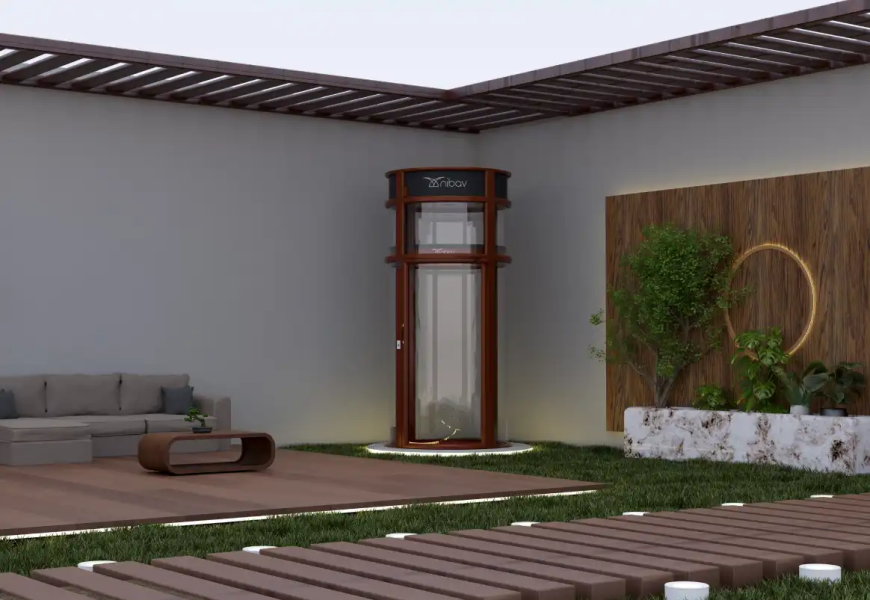As modern homes evolve to prioritize convenience, accessibility, and luxury, residential elevators have become a sought-after feature for many homeowners. Whether you’re planning a new construction or retrofitting an existing home, selecting the right elevator requires careful consideration. The choice involves more than aesthetics or price; safety, space, and functionality are equally important factors.
This comprehensive guide will walk you through everything you need to know to choose the right residential elevator for your home. From types of elevators to cost considerations and safety features, we’ll cover the essentials to help you make an informed decision.
1. Assess Your Home’s Layout and Space Requirements
The first step in choosing the right residential elevator is assessing your home’s layout. Different homes have different space constraints, so it’s crucial to understand where an elevator can be installed and how much room is available.
Analyze Available Space
Residential elevators come in a variety of sizes, and the amount of space you have will largely determine which type of elevator you can install. For instance:
- Compact models may require less floor space but might limit the weight capacity.
- Larger elevators offer more room for people, wheelchairs, or larger loads, but they will need more space in terms of both width and height.
In addition, consider the following:
- Shaft Space: Traditional elevators need a dedicated shaft, which may require construction. Ensure your home has room for this installation.
- No-Shaft Options: Some modern elevators, like pneumatic or platform lifts, don’t require a full shaft, making them easier to install in homes with space constraints.
New Construction vs. Retrofit
If you’re building a new home, planning for an elevator during the design phase offers more flexibility. In contrast, retrofitting an elevator into an existing home might require compromises or additional construction. Knowing whether you are retrofitting or building new will affect your choice of elevator type.
2. Understand the Types of Residential Elevators
There are several types of residential elevators, each with distinct mechanisms, space requirements, and installation processes. Understanding the differences will help you choose the best option for your needs.
1. Hydraulic Elevators
Hydraulic elevators use a hydraulic pump to move the elevator car. They’re reliable and offer a smooth ride but require a machine room to house the equipment.
- Pros: Quiet, smooth operation; suitable for larger homes.
- Cons: Requires a machine room; can be more expensive to install.
2. Cable-Driven (Traction) Elevators
Cable-driven elevators, also known as traction elevators, use a system of cables and counterweights. They are efficient and commonly used in both commercial and residential settings.
- Pros: Can travel multiple floors; doesn’t require a machine room.
- Cons: Typically noisier than hydraulic models; may require more maintenance.
3. Pneumatic (Vacuum) Elevators
Pneumatic elevators use air pressure to move the car. They are a newer option in the residential market and have a futuristic design.
- Pros: No need for a machine room or shaft; space-saving; energy-efficient.
- Cons: Limited weight capacity; may not be ideal for multi-story homes.
4. Shaftless (Platform) Elevators
Shaftless elevators are designed for homes with minimal space. They are ideal for users who only need to travel one or two floors and don’t want to undertake extensive renovations.
- Pros: Compact; easy to install in existing homes; cost-effective.
- Cons: Limited to fewer floors; typically has a lower load capacity.
5. Winding Drum Elevators
Winding drum elevators operate using a drum and cable system that winds the cable around a drum to lift or lower the car.
- Pros: Affordable and space-saving.
- Cons: Not as smooth as other types; may require more maintenance.
3. Consider the Elevator’s Purpose and Capacity Needs
Next, think about who will be using the elevator and for what purpose. This will help determine the size and weight capacity you require.
Users’ Mobility Needs
If you’re installing the elevator for an elderly or disabled family member, you’ll need to choose a model that accommodates wheelchairs or walkers. Ensure the elevator car is large enough to handle these mobility aids comfortably.
Weight Capacity
Residential elevators typically have weight capacities ranging from 500 to 1,500 pounds. Consider what you’ll be transporting in the elevator:
- Personal use: A standard capacity (500-750 pounds) is usually sufficient for 2-3 people.
- Frequent heavy loads: If you plan to transport furniture, large packages, or groceries frequently, you may need a higher capacity model.
4. Focus on Safety Features
Safety should always be a top priority when choosing a residential elevator. The following safety features are commonly included in modern elevators, but it’s important to ensure they meet your specific needs.
Emergency Backup Systems
Power outages can happen unexpectedly, so make sure your glass lifts comes equipped with an emergency battery backup. This feature ensures that the elevator can still function during a blackout, either allowing passengers to exit safely or continue operation for a limited time.
Door Interlocks
Door interlocks prevent the elevator from operating if the door is not securely closed. This feature ensures the safety of users by preventing the elevator from moving while the doors are open.
Emergency Communication Systems
Having an emergency phone or communication system inside the elevator is essential. If the elevator malfunctions or if a passenger becomes stuck, they can use the phone to contact emergency services.
Automatic Braking System
An automatic braking system is a vital feature that halts the elevator if it detects a malfunction or if something goes wrong with the lift mechanism.
Smooth Start and Stop Technology
To minimize the risk of tripping or injury, many modern elevators feature smooth start and stop technology. This prevents the jerking motion that can occur when an elevator begins or ends its trip.
5. Evaluate Aesthetic and Customization Options
A residential elevator isn’t just a functional addition to your home; it’s also a feature that can enhance its aesthetic appeal. Today’s elevators come in a wide range of customizable options, allowing you to choose finishes, materials, and designs that complement your home’s style.
Interior Design
You can select from a variety of cabin materials, including wood, glass, metal, and even custom finishes. Choose materials that blend seamlessly with your home’s decor or create a luxurious contrast for a modern touch.
Door Styles
Depending on your personal taste and space limitations, there are several door options to consider:
- Swing doors: These open like traditional doors, which may be ideal in compact spaces.
- Sliding doors: Similar to commercial elevators, sliding doors offer a sleek, modern look and are space-efficient.
- Glass doors: For a more open feel and modern design, glass doors allow light and visibility, giving the elevator a spacious look.
Lighting and Fixtures
Consider the type of lighting you want inside the elevator. LED lighting is a popular, energy-efficient option that provides bright, even illumination. Additionally, you can choose custom fixtures to add a touch of elegance or modern flair.
6. Factor in Cost and Budget
The cost of a residential elevator can vary widely based on the type of elevator, customization options, and the complexity of installation. Here’s what to keep in mind when budgeting for your elevator.
Installation Costs
- Hydraulic and cable-driven elevators tend to be more expensive to install, especially if a machine room or dedicated shaft is required.
- Pneumatic and shaftless elevators are typically more affordable because they don’t require as much structural modification.
- Retrofitting costs can increase the overall price, particularly in older homes where space or wiring adjustments are necessary.
Maintenance and Operating Costs
Maintenance costs should also be factored into your budget. Hydraulic and cable-driven elevators generally require more upkeep than pneumatic models. Make sure to account for ongoing maintenance fees to keep your elevator in safe working condition.
7. Work with a Reputable Elevator Company
Choosing the right residential elevator is not just about selecting the model; it’s also about working with a reliable and experienced company. Make sure the elevator installer you choose has a strong track record, good reviews, and offers ongoing support for maintenance and repairs.
Warranty and Service Contracts
Check whether the company offers a warranty on the elevator and whether they provide service contracts for maintenance. A good warranty can protect you from unforeseen costs, while a service contract ensures regular maintenance to prevent breakdowns.
Conclusion
Choosing the right residential elevator is an investment in both convenience and long-term comfort. By assessing your home’s layout, understanding the types of elevators available, and prioritizing safety features, you can find the perfect elevator to suit your needs. Don’t forget to consider aesthetic options and work within your budget to make the best choice for your home. With the right guidance and planning, you’ll enhance your home’s accessibility, functionality, and value.















